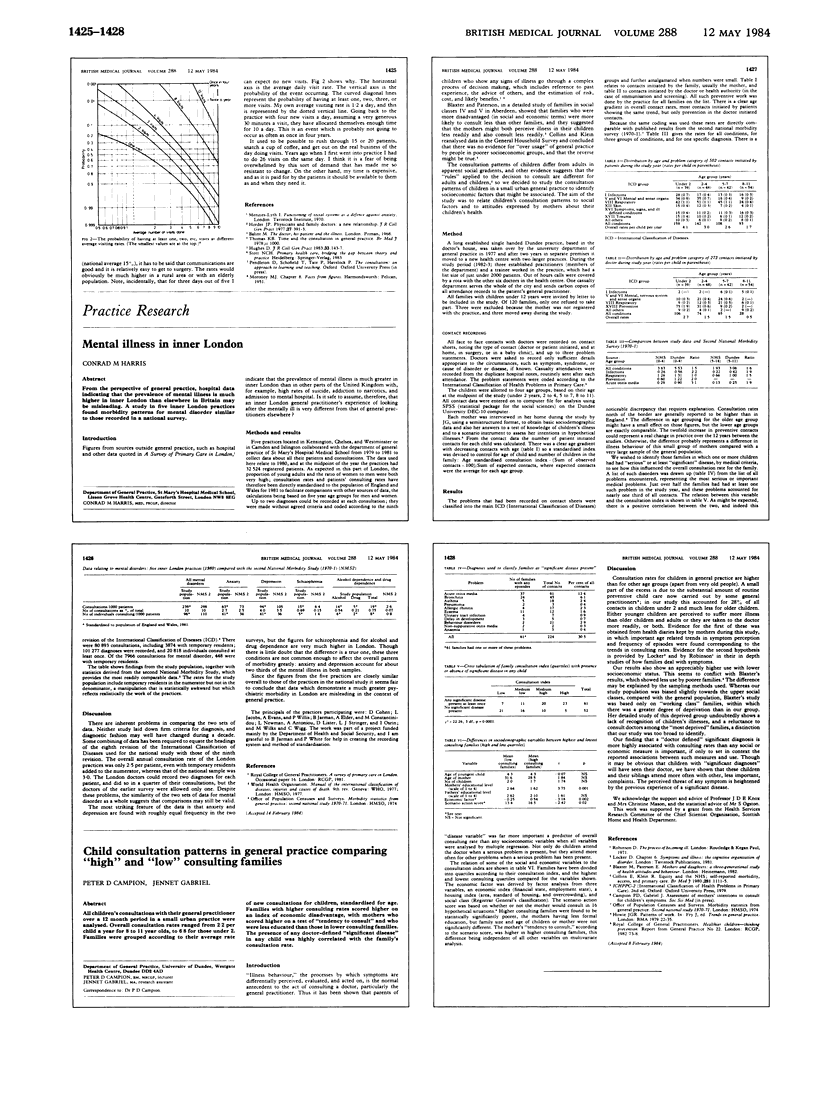Abstract
All children's consultations with their general practitioner over a 12 month period in a small urban practice were analysed. Overall consultation rates ranged from 2.2 per child a year for 8 to 11 year olds, to 6.8 for those under 2. Families were grouped according to their average rate of new consultation for children, standardised for age. Families with higher consulting rates scored higher on an index of economic disadvantage, with mothers who scored higher on a test of "tendency to consult" and who were less educated than those in lower consulting families. The presence of any doctor-defined "significant disease" in any child was highly correlated with the family's consultation rate.
Full text
PDFPage 1425-1428



